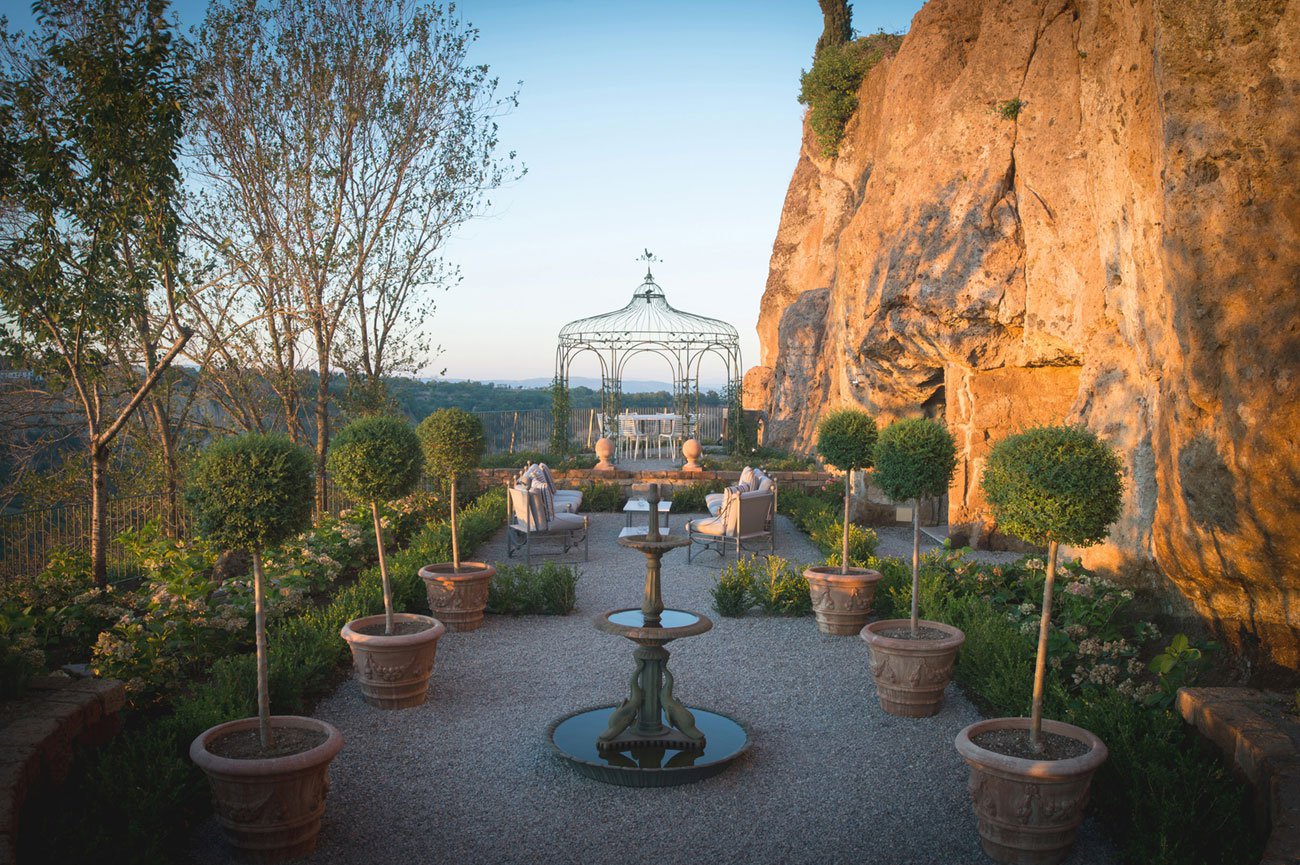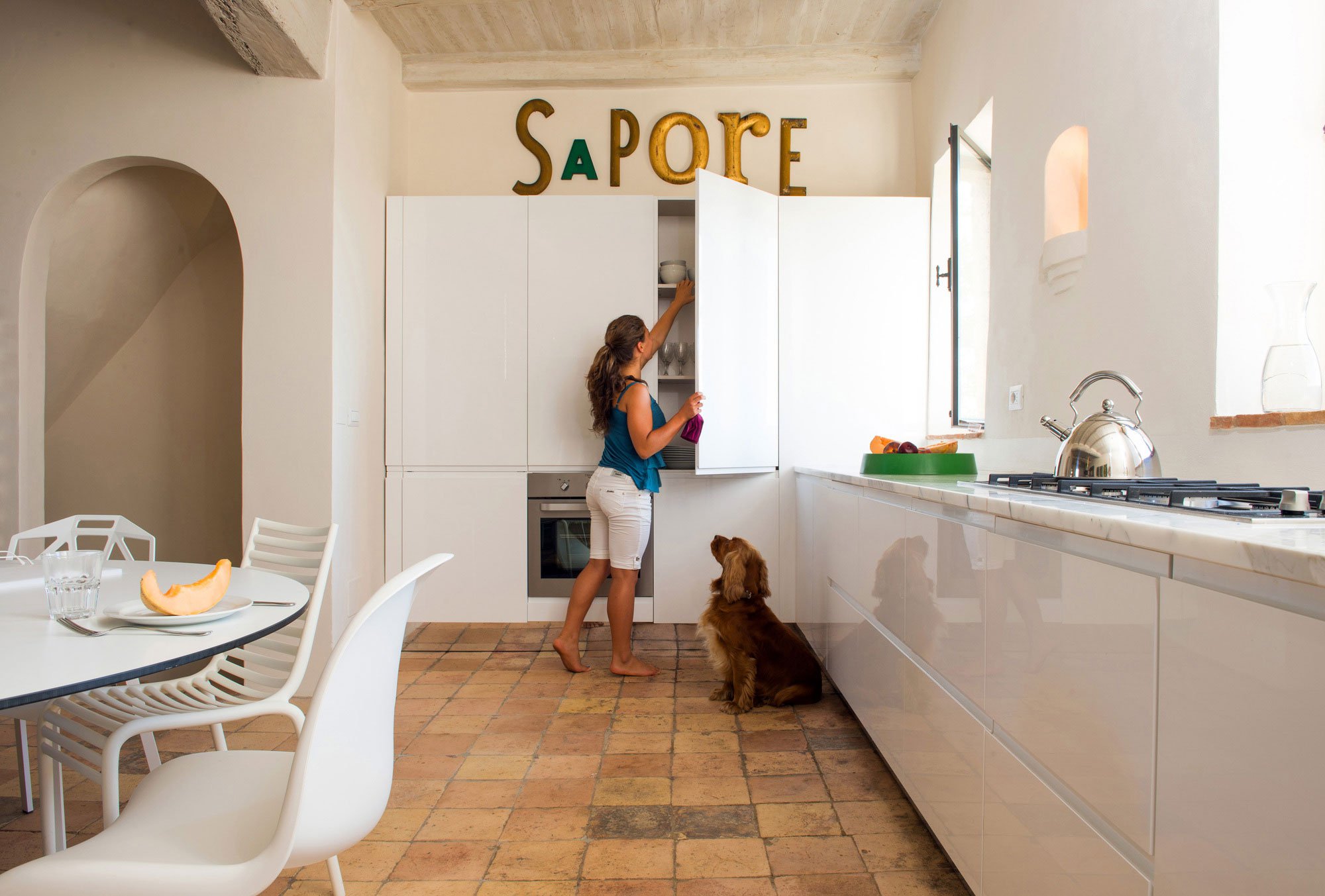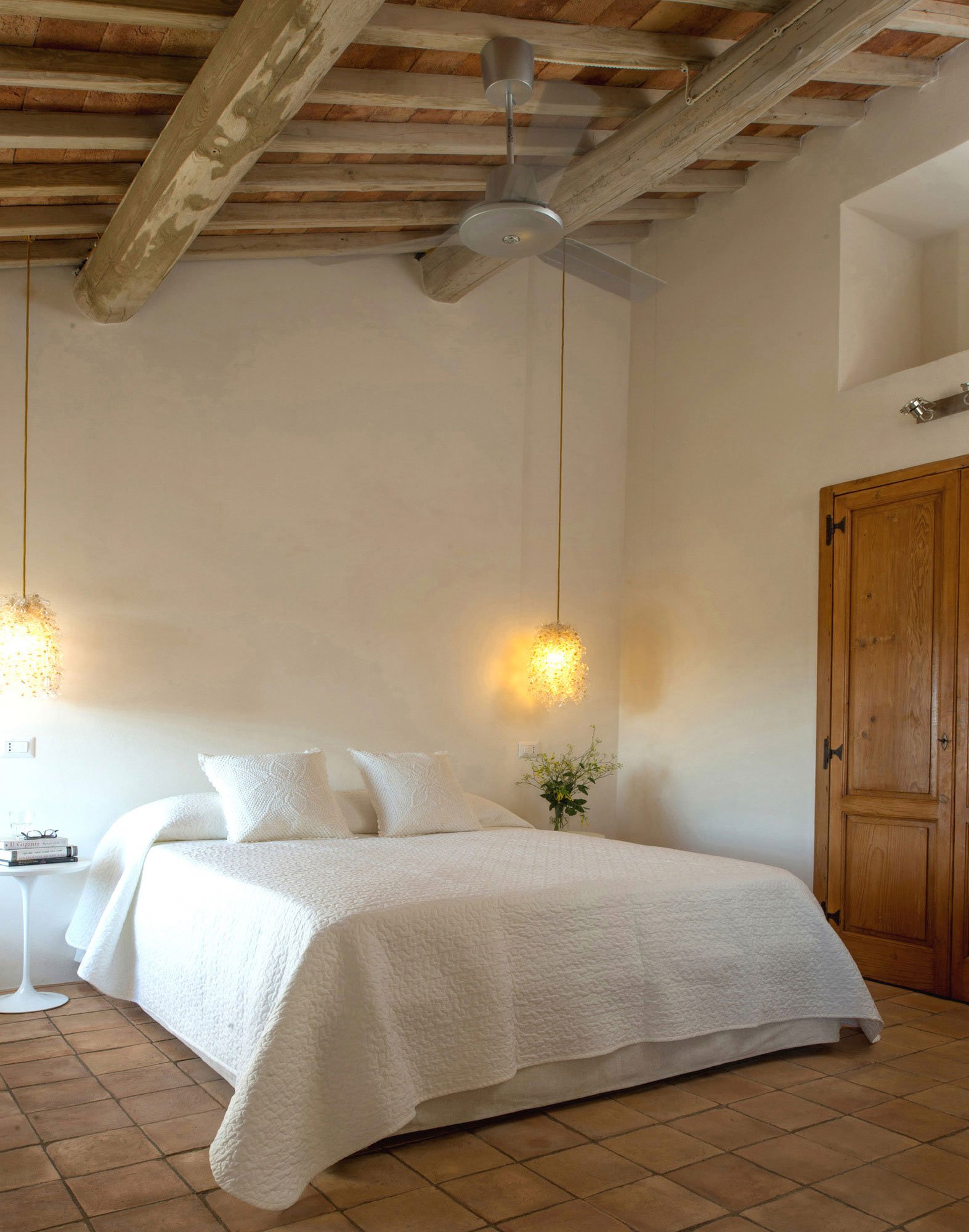Domus Civita by Studio F
Location: Civita di Bagnoregio, Italy
Year: 2011
Photo courtesy: Bob Coscarelli
Description:
Domus Civita was purchased in a disastrous state in 2011 by owner and architect Patrizio Fradiani and his partner Mark. Inhabited but abused and cut up, the house main structure was part of a larger building divided up in the 20th century even though the original structure dates from the 14th century, when the town of Civita di Bagnoregio current urban layout developed. The signs of the house original beauty were still visible in the old stone fireplace, the wooden beams, the stone walls, the terracotta floors.
However the most interesting feature of the house was its umbilical connection to its underground world all carved into the soft volcanic tufa stone. Through a series of tunnels and caves dating from the middle ages as well as Roman and Etruscan times the house ground floor had a stair dug into the stone and reaching a large underground Roman water cistern still perfectly preserved. Through the cistern you could reach an abandoned garden suspended between 2 stone cliffs at the edge of town. From the garden more caves of Etruscan and medieval times were dug into the rock opening up interesting possibilities for creative uses.
The renovation project became an exercise in creating a suitable connection that would embrace all these different spaces and make 2600 years of architectural history feel organic and livable. While the main house structure got fully renovated by preserving and restoring all the old features and materials, we decided to infuse it with modern elements and romantic touches that felt complimentary to the house but not plagiaristic. The caves and grottos got cleaned and restored and converted into a meditation room, art galleries, a wine cellar, a pool with hot tub and a garden kitchen.
The garden was cleared of 150 trees, blackberry bushes and ivy and, to contrast the space with the stone cliffs, the caves and the modern interventions, became a formal Italian garden in the best tradition of the area. In a surprising way the new garden bridges the ancient, the old and the new, almost adding that missing piece of the architectural puzzle of Domus Civita . All the materials used are consistent throughout this multistory architectural extravaganza to help add an architectural consistency that is contextual to the town yet modern and with a whimsical element infused on top of all of it. All the furnishings reinforce this idea even more by spanning 60 years of Italian modern design and creating at once harmonious spaces and synergy between all of them.
Thank you for reading this article!



























